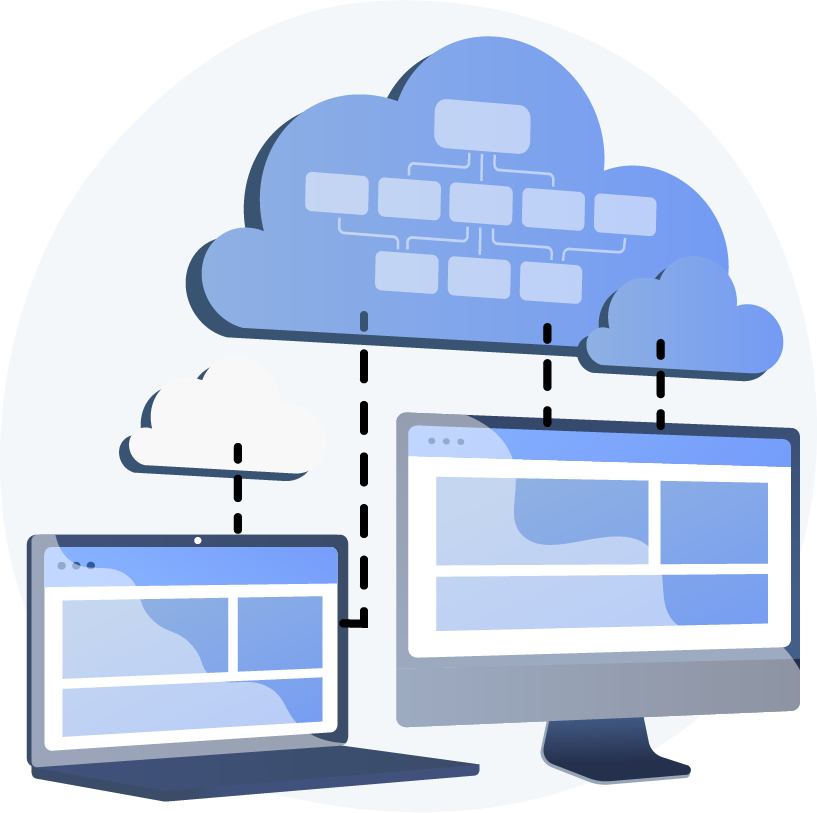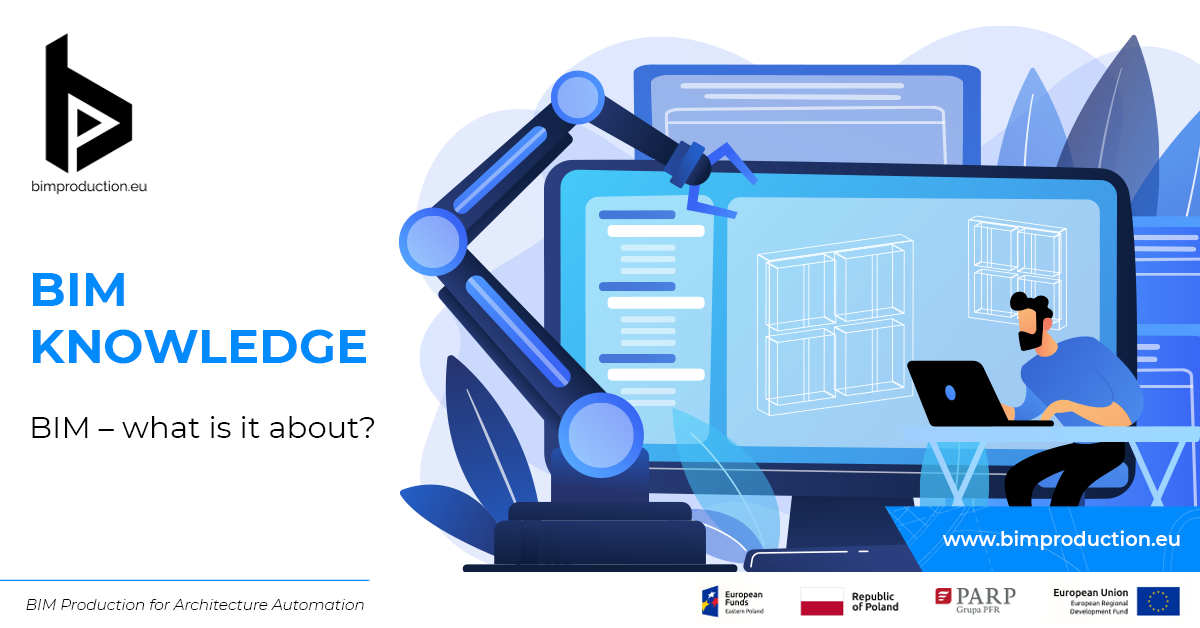BIM is a topic, which is more and more popular across the world. It is thanks to raising the development of technology, which the main objective is to supports all aspects of our life – including building and architecture industries. In this article, we invite to take a closer look at the genesis of BIM.
The acronym BIM has many translations.
There are 3 extensions to the BIM acronym:
- Building Information Modeling
- Building Information Model
- Building Information Management
Most often, when using the abbreviation/acronym BIM, we mean Building Information Modeling as the process of creating a project.
B as “BUILDING”
We do not mean only a building as a single house / facility.
BIM technology covers the entire AEC (Architecture, Engineering, Constructions) industry, so the scope of its use is wide and includes:
- Facilities / buildings (residential buildings, public utility buildings, airports, shopping centers, hospitals, etc.)
- Infrastructure (roads, railways)
- Engineering facilities (bridges, tunnels, power plants, but also off-shore facilities or energy networks)
Due to the chain of connections and dependencies, this technology is also used by suppliers working in the above-mentioned sectors. These include interior designers, manufacturers of building materials and property managers. Each of the aforementioned industries develops this technology for their own needs and maximizes the benefits of using BIM for the needs of their company.

I as “INFORMATION”
Information is the key word in this technology. The appropriate organization, transparency, structure and the ability to search and read the necessary information is the basis of BIM and its most important component.
The larger the project, the more documentation is created during its implementation. The traditional model of generating and exchanging documentation often leads to chaos and misunderstandings. BIM technology solves this problem thanks to the possibility of rapid information exchange through the use of a common information exchange space – CDE (Common Data Environment) and the division of data generated during the investment process into three groups:

- Graphical Data
- Non-Graphical Data
- Documentation
“Remember – the information itself, without assigning it to the model, is only a set of chaotic data.”
M as „MODEL/MODELING/MANAGEMENT”
The model is a virtual representation of the object that is to be built (Digital Twin). It is the focal point of the process that all project participants rely on.
Its incredible advantage, however, is the possibility of a perfect presentation of the project concept at an early stage, showing what the investment will look like in 3D
“Remember – a model without information about its individual components is only a visualization.”
To fully talk about BIM, all its components must be combined. A model without information is just a visualization, information without a model is just a data set. Only together they create a coherent technology with great potential.
MODEL 3D + INFORMATION = BIM
BIM in practice – The idea of BIM is cooperation and sharing
The idea of BIM technology comes down to cooperation and sharing of information by all project stakeholders who produce and use information about the building, based on its coherent, comprehensive model saved in digital form.

In practice, it looks like that based on the architect’s vision, a digital, three-dimensional model is created, enriched with additional information, which is both a complete source of information about the investment and the area of operation of subsequent teams or specialists involved in the work on the project. Traditional documentation (if necessary) is generated on the basis of current data contained in the model, which ensures the consistency of all its elements.
The great advantage of the digital model is that it can include extensive information, such as the semantics of building components, spatial relationships and relationships between them, the number and properties of building materials and products. All this information is in one place, it is available to everyone involved in the project and can be updated on an ongoing basis.
BIM in the project life cycle
BIM technology can be successfully used throughout the entire life cycle of the investment:

- Design stage – improvement of communication, detection of design errors and clash detection
- Analysis stage – information contained in the project helpful in generating structural, energy and environmental analyzes
- Construction stage – availability of detailed guidelines for construction works directly on the construction site, work schedules
- Operation stage – a source of information about building components and their location, warranty periods and the need for periodic servicing of individual elements
The development of BIM in the building industry
BIM technology is constantly evolving, and more and more industries in the construction sector see the potential in using BIM in their company. There are more and more new tools to facilitate work in this technology, allowing you to present your services on a different level, and thanks to the promotion of digital solutions in construction by the governments of individual countries, the interest and knowledge about BIM increase every year.
BIM – revolution or evolution?
Change always takes time and commitment. However, they are a natural consequence of development. We live in times when everything around us changes rapidly. We have also learned to quickly adapt to the changes that surround us, whether in personal or professional life.
BIM is no longer perceived as a revolution, but rather a natural stage in the evolution of the construction industry according to digital solutions dominating all over the world.



Recent Comments